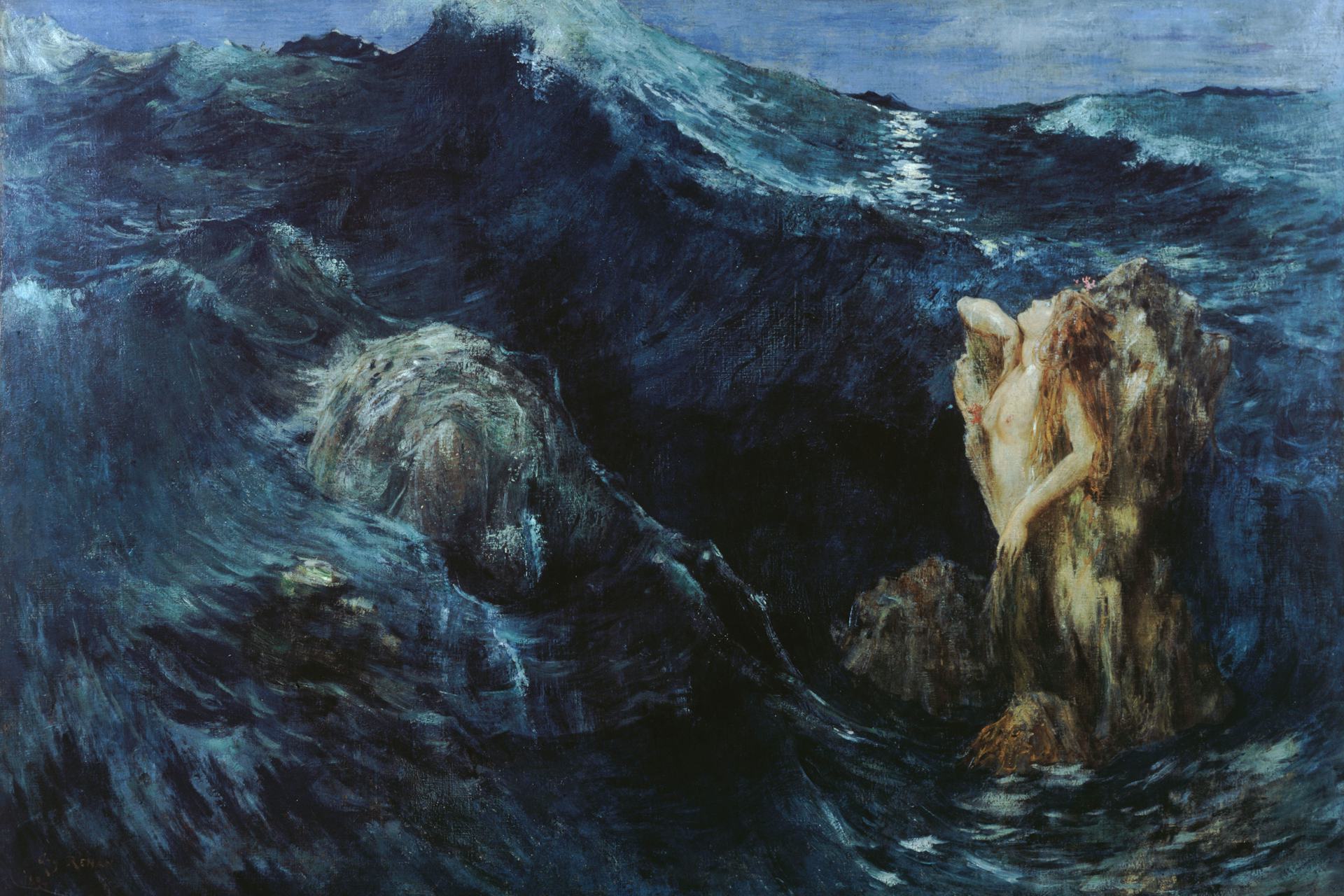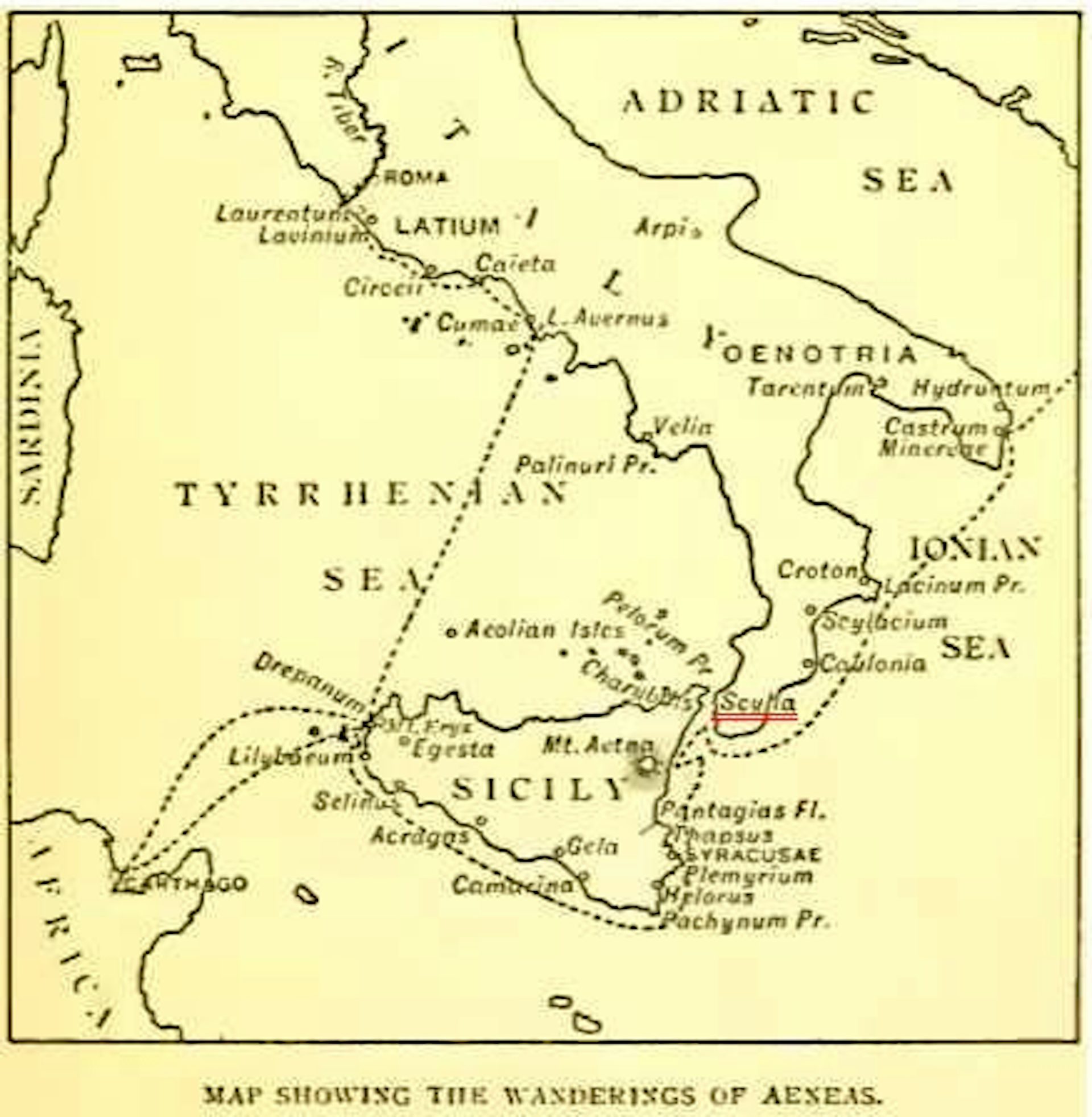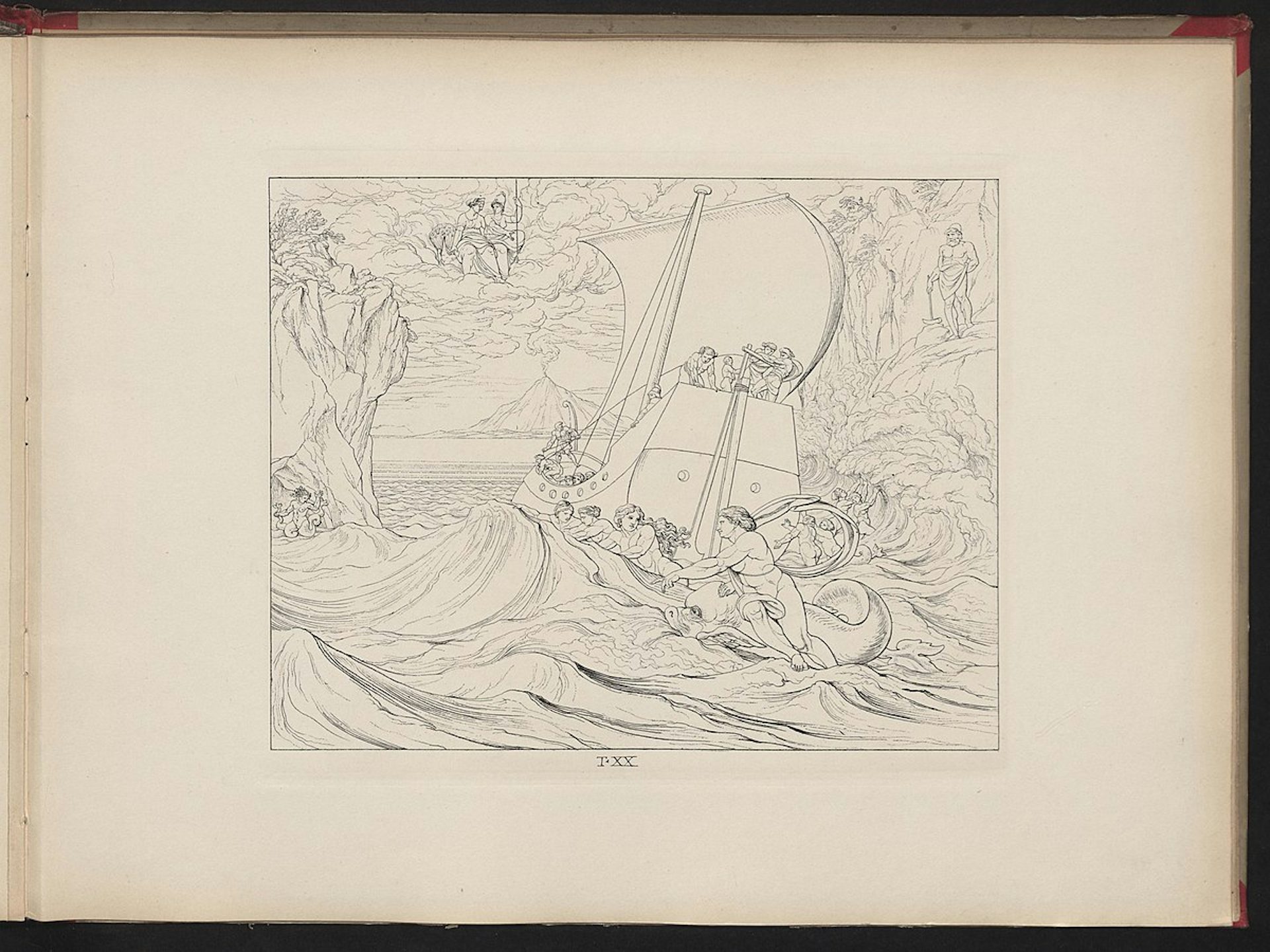Charybdis

Charybdis and Scylla by Ary Ernest Renan (1894).
Musée de la Vie romantiquePublic DomainOverview
Charybdis was a monster of obscure origins who manifested as a giant whirlpool. Every day, she swallowed up the waters of the sea three times, only to regurgitate them. Charybdis shared a narrow strait with the monster Scylla. Those who attempted to traverse the strait rarely lived to tell the tale: what Scylla did not pick off with her many heads, Charybdis would swallow up with her whirlpool.
Together with Scylla, Charybdis faced off against various heroes, including Jason, Aeneas, and (most famously) Odysseus. In the myth of the wanderings of Odysseus, it was Charybdis who destroyed his last ship, leaving Odysseus himself as the only survivor.
Etymology
The etymology of the name “Charybdis” is unknown.[1]
Pronunciation
English
Greek
Charybdis Χάρυβδις Phonetic
IPA
[kuh-RIB-dis] /kəˈrɪb dɪs/
Attributes
Locale
Charybdis lived deep in the ocean, beneath a fig tree growing from a small rock in a narrow strait. Her fellow monster, the many-headed Scylla, inhabited a larger rock directly opposite. The two creatures were within bowshot of one another; thus, ships and sea creatures passing through the strait could not avoid one without approaching the other.
Early sources, such as Homer, did not specify the exact location of the strait in which Scylla and Charybdis resided. They probably imagined it in some obscure and largely unexplored part of the world. But by the Classical period (490–323 BCE), Scylla and Charybdis were generally said to have lived in the Strait of Messina, which separates the island of Sicily from the boot of Italy.[2]

A map of the wanderings of Aeneas, showing the locations of Charybdis and Scylla (underlined in red). From an edition of The Aeneid of Virgil: Book III, edited by Philip Sandford (London: Blackie & Son, 1900).
Wikimedia CommonsPublic DomainAppearance
A chilling description of Charybdis can be found in Book 12 of Homer’s Odyssey, where the sorceress Circe advises Odysseus on the best way to pass between Scylla and Charybdis. After telling of Scylla—a monster with the torso of a human female, twelve feet, and six long heads ending in six toothy mouths—Circe introduces Charybdis:
But the other cliff [opposite Scylla], thou wilt note, Odysseus, is lower—they are close to each other; thou couldst even shoot an arrow across—and on it is a great fig tree with rich foliage, but beneath this divine Charybdis sucks down the black water. Thrice a day she belches it forth, and thrice she sucks it down terribly. Mayest thou not be there when she sucks it down, for no one could save thee from ruin, no, not the Earth-shaker.[3]
As Charybdis swallowed and subsequently threw up the waters of the sea, she formed a great whirlpool; once caught inside of it, no ship could escape. It was far better to risk having a few sailors snatched up by Scylla than to sail too close to Charybdis and lose the whole ship, crew and all.
Family
Family Tree
Mythology
Origins
Though the earliest authors revealed nothing about Charybdis’ parentage or where she came from, later authors did relay an origin story for the horrific creature. In his commentary on Virgil’s Aeneid, Servius wrote that Charybdis was a daughter of Poseidon and Gaia known for her voracious appetite. When Heracles captured the cattle of Geryon as his tenth labor, Charybdis tried to steal the cattle from him. As punishment, Zeus cast her down to the bottom of the sea. There, her nature served her well as she swallowed and subsequently threw up the waters of the sea three times each day.[5]
Charybdis and the Heroes
Several notable heroes encountered Charybdis in the course of their travels.
Jason and the Argonauts
On their return journey from Colchis, Jason and the Argonauts were forced to sail between Scylla and Charybdis. But the goddess Hera, who loved Jason, ensured their safe passage. She ordered the Nereids to guide the Argo (the Argonauts’ ship) through the middle of the strait, where they would remain out of reach of both Scylla and Charybdis.[6]

The Voyage through Scylla and Charybdis by Asmus Jacob Carstens and Joseph Anton Koch (1884).
Wikimedia CommonsCC BY-SA 4.0Odysseus
Odysseus’ encounter with Scylla and Charybdis was even more famous, albeit not as successful. On his return voyage from Troy, Odysseus was forced to sail through the strait inhabited by the two monsters. The sorceress Circe had warned him that he was better off sailing close to Scylla and losing a handful of his men, rather than sailing too close to Charybdis and losing his whole ship and crew.[7]
Odysseus followed Circe’s instructions: as he sailed by Scylla, six of his men were snatched up and eaten (one for each of Scylla’s heads).[8] But the ship avoided getting sucked up by Charybdis, and everyone else made it out alive.
This should have been the last Odysseus saw of Scylla and Charybdis. Unfortunately, Odysseus’ men soon angered Helios by eating his sacred cattle, and they were driven back to the strait of Scylla and Charybdis as punishment. This time, Odysseus was unable to avoid Charybdis, and his ship was sucked into the whirlpool. Only Odysseus survived: he clung to the fig tree growing over Charybdis until the monster regurgitated a plank from his ship. He then jumped onto the plank and floated away.[9]
Aeneas
There was another hero who almost encountered Scylla and Charybdis during his adventures: Aeneas, a Trojan hero and the ancestor of the Romans. In one version, Aeneas managed to avoid Scylla and Charybdis entirely by circumnavigating Sicily.[10] In another version, Scylla had been transformed into a great reef by the time Aeneas arrived, so no detour was necessary; he simply sailed close to Scylla’s cliff, thereby evading Charybdis’ whirlpool.[11]
Pop Culture
In modern pop culture, as in ancient mythology, Charybdis tends to be linked with Scylla. The two monsters have appeared, for example, in the 1997 miniseries The Odyssey and in The Sea of Monsters, the second novel in Rick Riordan’s Percy Jackson and the Olympians series (adapted into a movie in 2013).